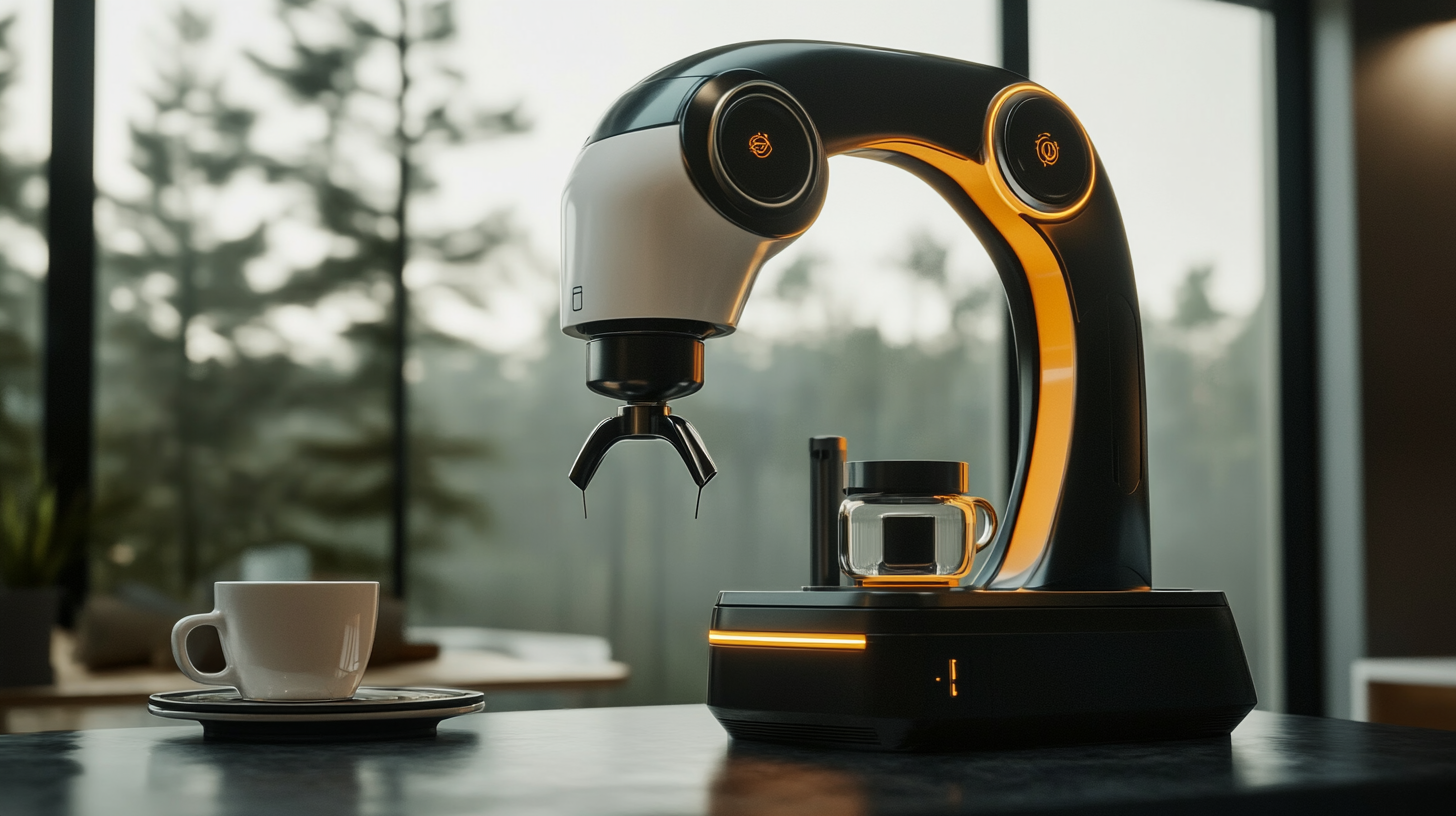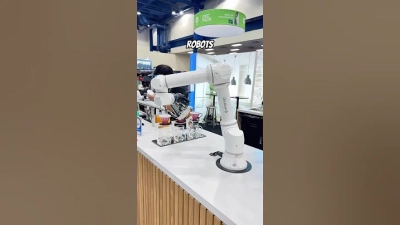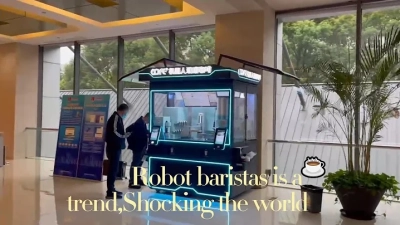Maximizing Efficiency with the Robotic Barista Coffee Machine Benefits for Global Buyers
In recent years, the coffee industry has undergone a significant transformation, largely driven by advancements in technology. The emergence of machines like the Robotic Barista Coffee Machine is redefining the customer experience and operational efficiency in coffee shops worldwide. According to a report by IBISWorld, the global coffee shop market is projected to reach $45 billion by 2024, highlighting a growing demand for not just quality coffee, but also innovative service solutions. As consumer preferences shift towards convenience and speed, incorporating automation into coffee preparation is becoming increasingly critical for businesses looking to stay competitive.
The Robotic Barista Coffee Machine presents an optimizable solution to these emerging needs, combining high-quality coffee preparation with remarkable efficiency. Research from MarketsandMarkets indicates that the global market for robotics in the food and beverage sector is anticipated to grow at a CAGR of over 14% between 2021 and 2026. This trend showcases an industry-wide pivot toward automation, where robots can serve not only to enhance productivity but also to maintain consistent quality and reduce labor costs. For global buyers, investing in a Robotic Barista Coffee Machine is not merely a transaction; it's a strategic move towards maximizing efficiency and enhancing customer satisfaction in a fast-evolving market.
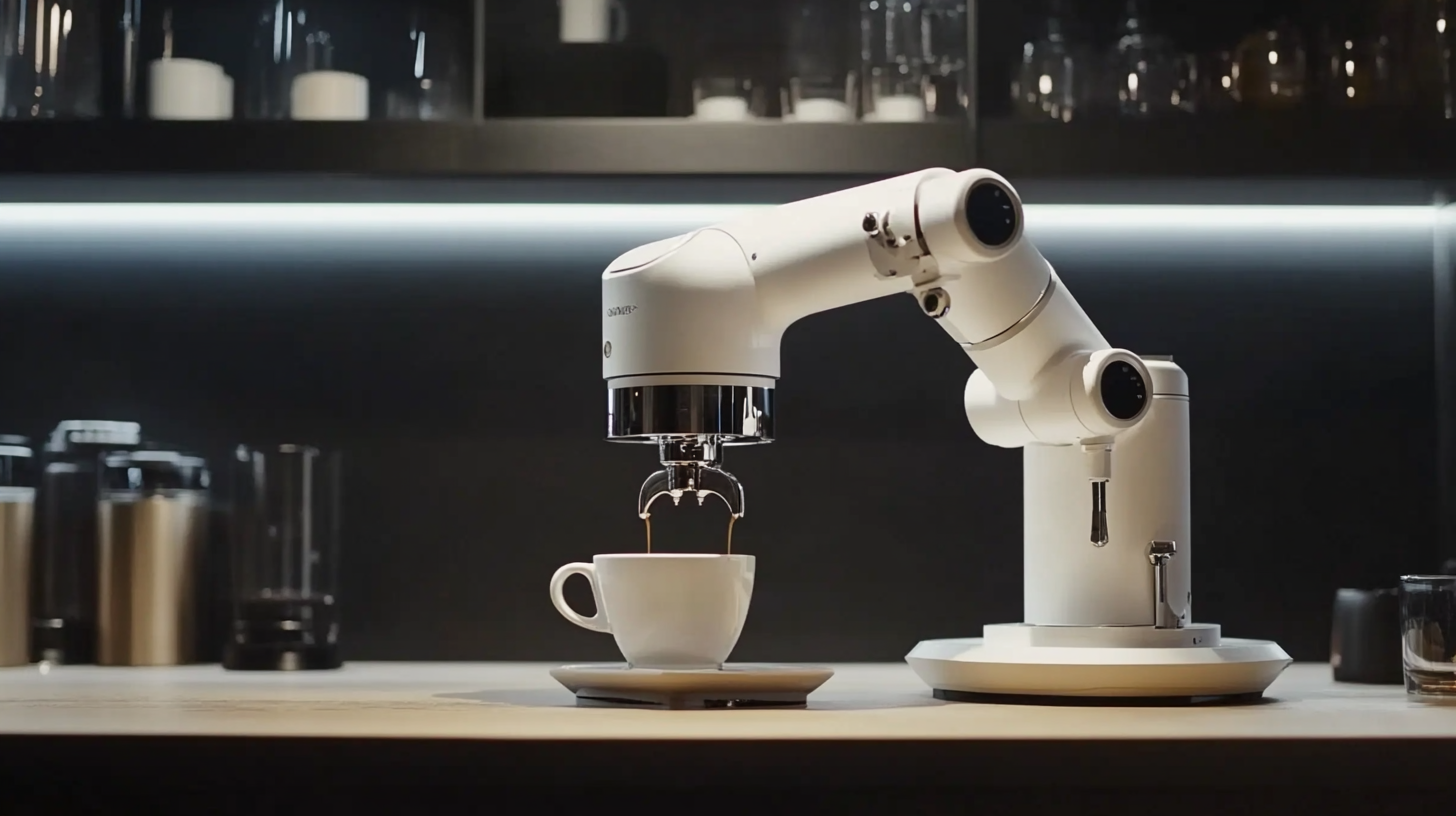
Understanding the Rise of Robotic Baristas in the Coffee Industry
The rise of robotic baristas in the coffee industry is not just a trend but a significant shift towards automation that enhances customer experience and operational efficiency. According to a report from ResearchAndMarkets, the global coffee shop market is projected to reach $450 billion by 2025, with automation playing a crucial role in meeting the demands of this growing market. The implementation of robotic systems can reduce labor costs by up to 30%, enabling coffee shops to allocate resources more effectively and increase profit margins.
Robotic baristas offer consistency that is difficult to achieve through manual preparation. A study by the National Coffee Association revealed that 67% of coffee drinkers are concerned about the quality of their coffee, emphasizing the importance of precision in brewing. Robotic machines, programmed with exact recipes and adhering to specific brewing times, ensure that every cup served meets the highest standards. This level of consistency not only boosts customer satisfaction but also fosters brand loyalty.
Furthermore, the demand for customization is on the rise, with 45% of consumers preferring personalized coffee drinks, as indicated by a recent survey from IBISWorld. Robotic baristas are designed to accommodate this trend by allowing customers to select their preferred milk, sweeteners, and flavorings through interactive interfaces. This technological advancement not only enhances the service experience but also attracts a tech-savvy demographic, making establishments with robotic solutions more appealing in a competitive market. As the coffee industry continues to evolve, the integration of robotic baristas could very well redefine the café experience for consumers worldwide.
Maximizing Efficiency with the Robotic Barista Coffee Machine Benefits for Global Buyers - Understanding the Rise of Robotic Baristas in the Coffee Industry
| Feature | Description | Benefits | Global Market Impact |
|---|---|---|---|
| Speed | Robotic baristas can prepare coffee orders quickly and efficiently. | Reduced wait times for customers, leading to increased sales. | Enhances customer turnover in coffee shops worldwide. |
| Consistency | Ensures uniformity in coffee preparation. | Improves customer satisfaction and loyalty. | Fosters brand reputation on a global scale. |
| Cost Efficiency | Reduces labor costs through automation. | Increases profit margins for coffee businesses. | Attracts investors interested in automated solutions. |
| Innovation | Brings cutting-edge technology to the traditional coffee industry. | Positions businesses as leaders in technological advancement. | Encourages global competitiveness among coffee vendors. |
| Customization | Can create personalized coffee beverages per customer preferences. | Enhances customer experience through tailored options. | Appeals to diverse consumer markets worldwide. |
Key Features of Robotic Barista Machines That Enhance Performance
Robotic barista coffee machines are revolutionizing the coffee industry, offering an efficient solution for businesses aiming to streamline their operations. One of the standout features of these machines is their precision brewing technology, which ensures that each cup of coffee is brewed to perfection. By maintaining consistent water temperatures and extraction times, these machines eliminate the variability found in manual brewing, providing customers with the same high-quality experience every time.
Another significant benefit is the integration of advanced automation and artificial intelligence. Robotic baristas can learn customer preferences and adjust brewing parameters accordingly, allowing for a personalized coffee experience. With their ability to process multiple orders simultaneously, these machines significantly reduce wait times, enhancing customer satisfaction and increasing throughput during peak hours.
Moreover, the user-friendly interfaces of robotic barista machines make them accessible to staff with varying levels of barista experience. This ease of use not only minimizes training time but also allows staff to focus on providing excellent customer service rather than getting bogged down in the complexities of traditional brewing methods. Features like mobile payment integration and real-time inventory tracking further streamline operations, positioning businesses to operate more effectively in an increasingly competitive market.
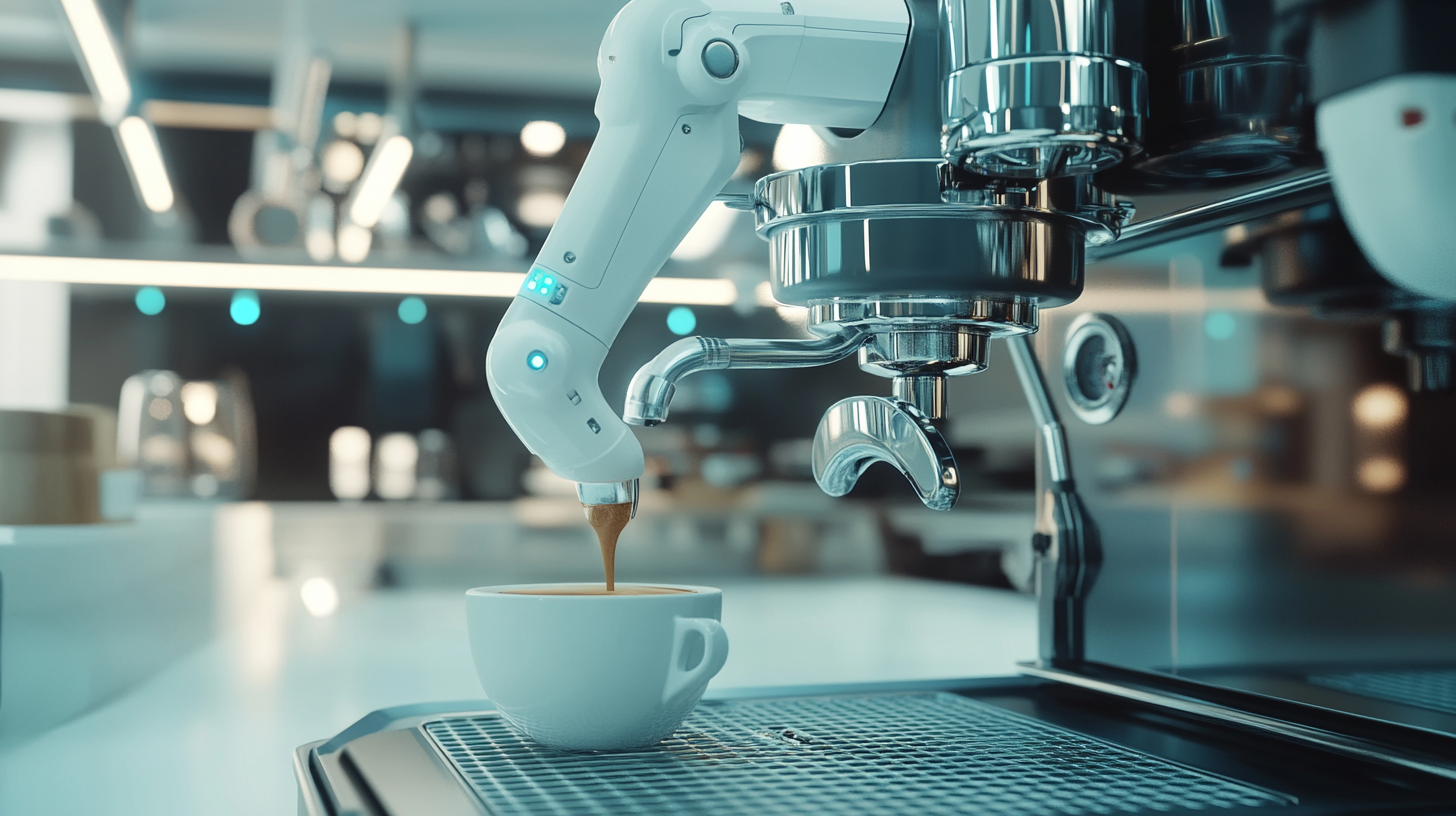
Cost-Benefit Analysis: Investing in Robotic Baristas for Businesses
Investing in robotic baristas presents a compelling opportunity for businesses seeking to enhance operational efficiency while delivering an exceptional customer experience. Recent industry reports project that the global market for robotic coffee machines is expected to reach $2.5 billion by 2027, reflecting a compound annual growth rate (CAGR) of 20%. This growth is driven by increasing demand for automation and the rising costs of labor in various regions. Businesses that integrate robotic baristas can significantly reduce labor costs, which typically account for around 30-35% of total operational expenses in the food and beverage sector.
A cost-benefit analysis indicates that robotic baristas not only lower staffing needs but also maintain consistent beverage quality, which is critical in building customer loyalty and repeat business. According to a study by the National Coffee Association, 62% of coffee drinkers reported that consistent taste is a key factor in selecting a coffee shop. By automating the brewing process, businesses ensure that each cup of coffee meets high-quality standards, thereby enhancing customer satisfaction and retention.
Moreover, the implementation of robotic technology can lead to a quicker service turnaround, which is vital in the fast-paced food and beverage industry. Businesses equipped with robotic baristas can serve an average of 150 cups per hour, compared to a human barista who can typically manage about 60 cups in the same timeframe. This efficiency not only boosts profitability but also allows staff to focus on other customer-centric tasks, ultimately optimizing the overall service experience. As competition intensifies, adopting such innovative solutions becomes essential for businesses aiming to thrive in the modern marketplace.
Maximizing Efficiency with the Robotic Barista Coffee Machine
Global Market Trends: The Demand for Automation in Coffee Services
The coffee service industry is undergoing a transformation as automation becomes increasingly integrated within its operations. With the global commercial coffee machine market expected to reach USD 9.3 billion by 2032, buyers are recognizing the strategic advantages of implementing robotic baristas in their cafés and restaurants. This shift not only enhances service efficiency but also meets the growing consumer demand for quick and consistent quality in coffee preparation.
As highlighted by recent market trends, the commercial coffee machine sector is projected to grow at a compound annual growth rate (CAGR) of 6.2% from 2024 to 2032. This growth is largely driven by advancements in technology and the push for automation, allowing businesses to streamline coffee services while reducing labor costs. Robotic baristas can prepare a variety of coffee drinks with precision, ensuring that customers receive their orders quickly and accurately, which is essential in today’s fast-paced environments.
Moreover, the rise of automation and the flourishing e-commerce sector are further propelling the demand for innovative coffee solutions. As more consumers seek convenience and efficiency, businesses must adapt to these changing preferences. Investing in robotic coffee machines not only satisfies modern consumers but also positions companies to remain competitive in a rapidly evolving marketplace. The benefits extend beyond just brewing coffee; they encompass improved customer satisfaction and operational efficiency, paving the way for a new era in coffee service.
Maximizing Efficiency with the Robotic Barista Coffee Machine
Case Studies: Successful Implementations of Robotic Barista Machines Worldwide
As the coffee industry evolves, robotic barista machines are gaining traction globally, transforming the way coffee lovers experience their favorite brews. Recent case studies have highlighted successful implementations of these machines, showcasing not just efficiency but also the intriguing ability to create art in a cup, such as latte art, all at the hands of a robot. These innovations suggest a future where technology and craftsmanship coexist, appealing to both traditionalists and enthusiasts alike.
One compelling case study from a leading café chain showed that integrating robotic barista machines increased service speed by over 50%, allowing customers to enjoy their beverages with minimal wait times. This efficiency didn't come at the cost of quality; in fact, customer satisfaction ratings soared. Reports indicate that the global market for robotic coffee machines is projected to grow by 25% annually, driven by a rising demand for automation in the food and beverage industry.
Moreover, the concept of "robotic hand-brewed coffee" is gaining traction among enthusiasts who previously viewed automated brewing as inferior. With advancements in technology, some machines can mimic manual brewing techniques, even executing intricate pouring methods to achieve the perfect extraction. This fusion of art and science not only meets consumer expectations but also elevates the overall coffee experience, appealing to the discerning palate of modern coffee aficionados.
